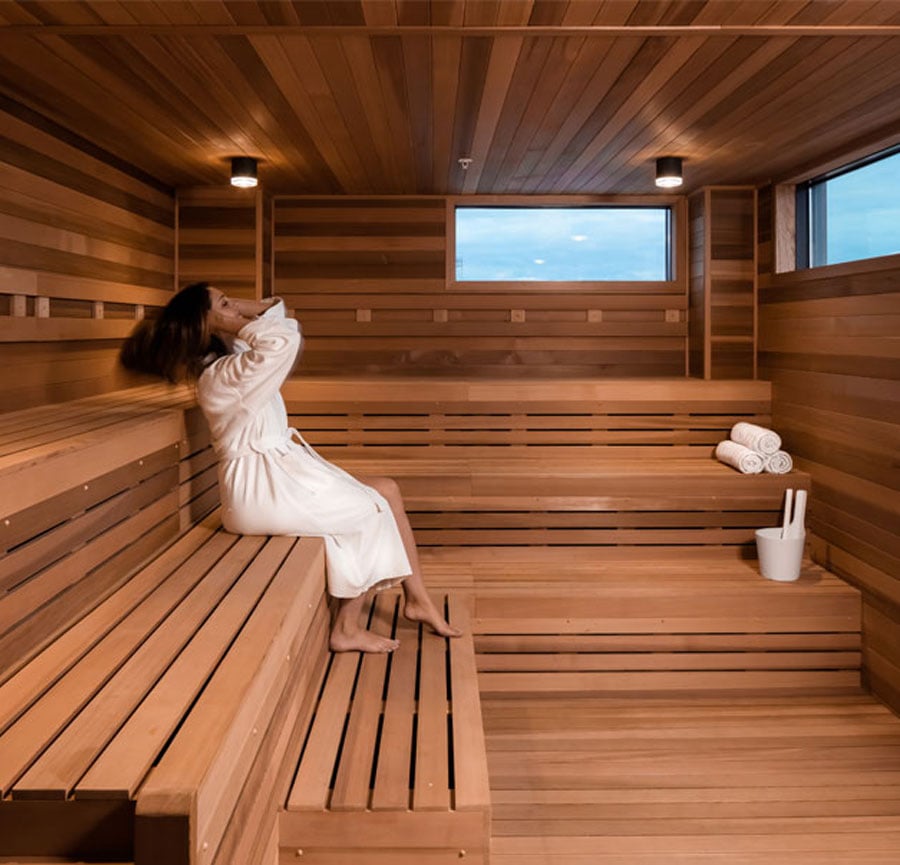The Only Guide for Traditional Sauna
An Unbiased View of Traditional Sauna
Table of ContentsTraditional Sauna - The FactsAbout Traditional SaunaSee This Report about Traditional SaunaTop Guidelines Of Traditional SaunaThe Main Principles Of Traditional Sauna
Most of the weight shed in a sauna is water loss and is re-gained upon rehydrating. However, certainly sauna can be an integral part of a healthy and balanced weight-loss program. To look at the distinctions between standard and IR saunas, I will separate these right into verifiable, academic, and produced differences.Thus, the most popular factor in the saunawhich is at the ceiling directly over the sauna heateris generally between 185 and 190 F. Claims that a standard sauna surpasses 200 F is merely not real and not applicable for electrical saunas marketed in the US. The temperature for a far-infrared sauna is usually set in between 120 and 140 F; nevertheless, unlike the standard sauna, the objective in and IR area is not to attain a high temperature.
As a result of this, the temperature level difference is practically unimportant, since profuse sweating results in both sauna kinds, however the technique of warming the body is various. In an IR sauna the bather will certainly really feel warm and will sweat profusely, but at much lower temperatures (Traditional Sauna). Thus, if the goal is to spend longer time periods in the sauna, the IR sauna is a great option
When a traditional sauna has actually been appropriately warmed, the sauna wall surfaces are warm, the air temperature has achieved established temperature and the rocks are super heated. As a fascinating side note, the heated walls and the rocks are producing far-infrared warmth, combined with the heated air, to produce an "wrapping up heat".
Traditional Sauna Fundamentals Explained

When the high temperature is accomplished, the elements cycle on and off to preserve the high temperature level. Many standard sauna customers appreciate pouring water over the rocks to develop heavy steam to raise sauna moisture levels. The benefits of pouring water over the rocks include: making the space much more comfy, moistening the nasal passages, and enabling the usage of aromatherapy by mixing necessary oils with the water.

When the power enters the body, it triggers the body temperature to raise and eventually causes sweat. In an infrared sauna it's important for the emitters/heaters to remain on nearly frequently. Since there is no mass of rocks to retain heat, the sauna will certainly cool if the emitters shut down.
As discussed over, the sauna bather in an infrared area intends to place himself before operating emitters to get maximum take advantage of the heat. The heating time for both rooms can be really different, depending upon exactly how the areas are made use of. For a conventional sauna, a bather should permit 30-40 mins for the space to attain a desired temperature level and to properly pre-heat the rocks.
The Best Guide To Traditional Sauna
A well constructed sauna will usually attain a temperature of 150-160 F in regarding 30-40 minutes. For hotter temperatures, the space may need to warmth for a longer duration.

Conventional saunas tend to be bigger (hence use more electricity) than infrared saunas, although conventional saunas additional reading are definitely readily available in one and two person dimensions as well. For a two-person typical sauna, 5x6 or 5x7 size is most preferred. The top bench can pleasantly seat two or three individuals and is visit this web-site likewise long sufficient to rest during the sauna session.
3 Simple Techniques For Traditional Sauna
The average expense per kWH of power in the united state is approximately $0.11, so a 4.5 kW heating unit will certainly set you back around $.50 to compete one hour, if the heating system runs continually for one hour. Commonly a sauna heating unit will compete 75% of the very first hour and 50% of succeeding hours on given that the aspects cycle once the set temperature is accomplished.

There is a seldom talked about distinction in the social experience in between the two areas. While our culture has lost several of the social benefit of the traditional sauna experience, it can be really socially fulfilling (Traditional Sauna). From family members time in the sauna, to heart-felt conversations with better view it halves, to sauna partiesthe typical sauna experience can cause intimate interacting socially
The smart Trick of Traditional Sauna That Nobody is Discussing
A lot of greater end infrared areas include colored light therapy, audio systems and full-glass fronts.